Acrylic painting techniques: Expert tips for artists
Pro acrylic painting techniques to bring your work to life.
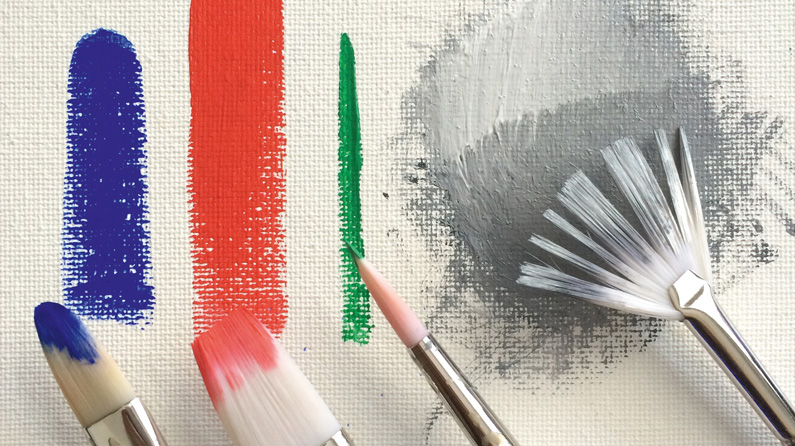
Want to get started with acrylics? This article reveals the key acrylic painting techniques you should know. Acrylics are fast drying paints that can be used straight from a tube, like oil paints, or can be thinned with water, like watercolour. They are extremely versatile and vibrant, offering the artist a wide range of textures, colours and consistencies. (After more general advice? See our article on painting techniques instead.)
Acrylics are also affordable, making them ideal for covering large areas with paint. Because these paints are opaque and fast drying, they can be very forgiving, allowing you to cover up mistakes with more paint. They can be painted on almost anything and dry into a water resistant surface. While you need to be aware of how quickly they dry, acrylics can be blended beautifully.
The heavy body colour of acrylics is buttery and smooth, blending on the canvas almost like oils. Because they basically dry into a plastic surface, they are ideal for using in multimedia painting as well. All of these unique properties mean that you'll need to brush up on your acrylic painting techniques before you get started.
Read on for everything you need to know. We'll begin with the kit you need, then introduce some simple acrylic painting techniques such as mixing and misting, to help you get used to working with this wonderfully versatile and rewarding medium. You might also want to check out our guide to canvas painting for beginners.
Acrylic brushes: A quick guide

We'll begin by introducing four key brush shapes that will be useful in your journey into acrylic painting, and exploring what each shape can be used for. Acrylic brushes tend to be made from synthetic materials and can be used with a variety of mediums. You should not use oil or watercolour brushes for acrylic painting.
It's important to have a good variety of brushes, ranging from small to large. You'll soon learn which you're more comfortable with, but these four are some of the more common shapes you'll encounter. The Filbert brush is a great all-purpose brush that can offer a straight or rounded shape.
Acrylic paints: What types are there?

Here we're using golden acrylics, which have a buttery texture and can to hold up to a lot of water. These are considered 'Heavy Body Acrylics'. We'd encourage you to experiment with a variety of brands to see which one you enjoy acrylic painting with the most – everyone has their favourite type and brand. Acrylic paint is essentially plastic; more specifically, pigment suspended in a polymer emulsion. You can break that emulsion with too much water, so take care when thinning it out.
The acrylic painting techniques in this article can be put into practice with any heavy body acrylic paint, student or professional grade.
How to mix acrylic paints
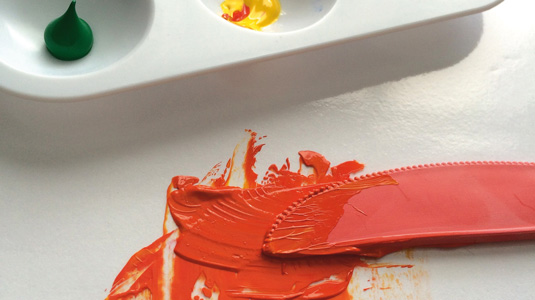
Mixing paints is a precise process. It's good to know your colour wheel here as you'll be mixing very specific colours as you work. Red and yellow can be combined to make a variety of oranges. Add in some green and you'll get brown and burnt umbers. Using a palette knife, a plastic knife, or even an extra brush is ideal when acrylic painting. Mix thoroughly and remember that some paints can dry a slight shade darker.
Need a refresher? See our guide to colour theory.
Misting: How to stop acrylics from drying out
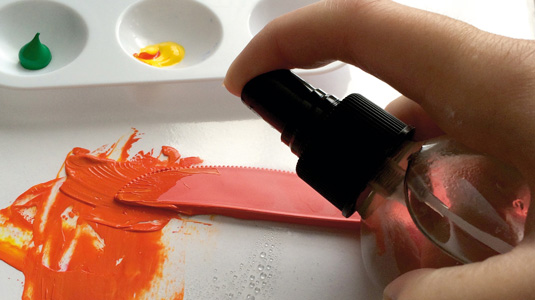
Acrylics dry quickly – sometimes too quickly. One way to keep paints moist easily is to mist them with water when you're acrylic painting. You can buy gardening misters at hardware or gardening stores. Depending on the surface you're painting on, you can water your acrylics down enough to almost resemble watercolour. This can be a valuable trick to quickly lie in an under painting to get started.
Using gesso as a base
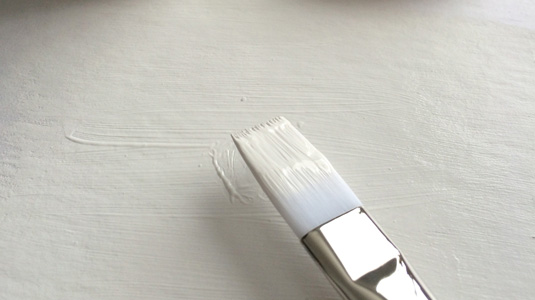
Gesso is a white paint mixture used as a ground for acrylic painting and oils. Linen is stretched for canvas then painted with gesso to provide a smoother and more resistant surface for the paint to pushed around on. Acrylic gesso is a little different from traditional gesso as it contains latex. You can also use gesso to create texture under the paint you're going to apply.
Glazing: How to seal acrylic paintings
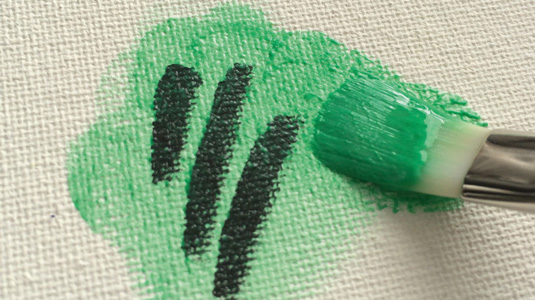
Glazing is a great way to seal pencil sketches to paint over. Using a gel medium is the best and most even way to achieve a glaze. Start by selecting the colour you'd like to glaze with, in this case green. Then mix a bit of gel medium and paint together with just a little mist of water to loosen it all up. Once it's an even mixture, apply the glaze over these black strokes.
Blending with acrylics

Blending is one of the trickier acrylic painting techniques to master. First, paint in a layer of white then using a filbert brush, add in your colour (here we're using blue) along the bottom of the area you want blended. Stroke back and forth, rapidly up and down the area, until you get a nice gradient from your colour to white. Working wet into wet is the best way to blend. You can also dry blend by laying in colour, letting it dry then dry brushing another colour over it.
Use wet in wet and over dry to build texture
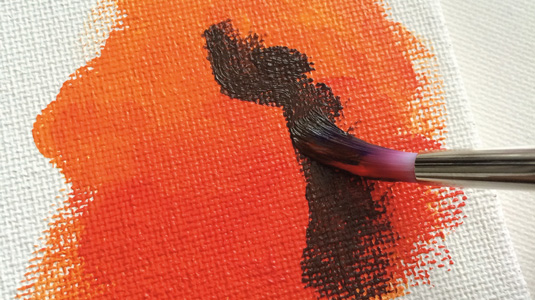
It's best to use this technique when the colour or surface underneath is dry. Start by loading up your brush (here with a deep purple), and paint a shape into the dry background (here orange). From there you can drag out the other side of the stroke to feather it into the canvas and paint below. You can see that acrylics have an incredible amount of control and will stay put pretty much wherever you put them.
Read more:

Thank you for reading 5 articles this month* Join now for unlimited access
Enjoy your first month for just £1 / $1 / €1
*Read 5 free articles per month without a subscription

Join now for unlimited access
Try first month for just £1 / $1 / €1
Get the Creative Bloq Newsletter
Daily design news, reviews, how-tos and more, as picked by the editors.

The Creative Bloq team is made up of a group of design fans, and has changed and evolved since Creative Bloq began back in 2012. The current website team consists of eight full-time members of staff: Editor Georgia Coggan, Deputy Editor Rosie Hilder, Ecommerce Editor Beren Neale, Senior News Editor Daniel Piper, Editor, Digital Art and 3D Ian Dean, Tech Reviews Editor Erlingur Einarsson, Ecommerce Writer Beth Nicholls and Staff Writer Natalie Fear, as well as a roster of freelancers from around the world. The ImagineFX magazine team also pitch in, ensuring that content from leading digital art publication ImagineFX is represented on Creative Bloq.
